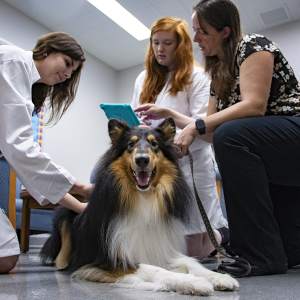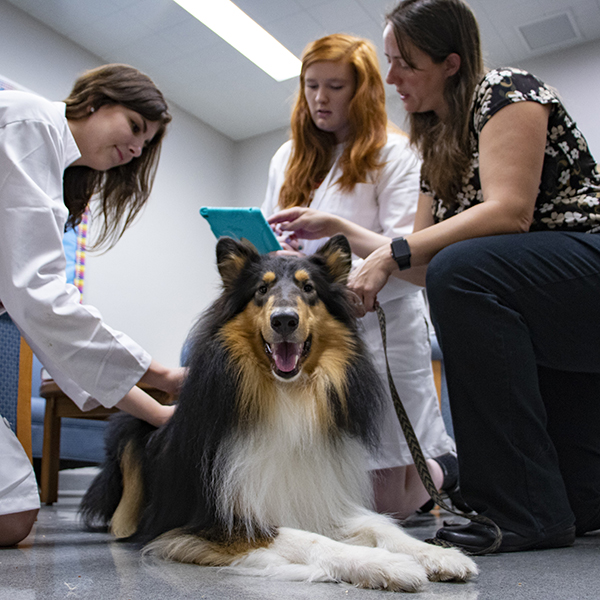Canine behavior research has become a fascinating field that bridges the gap between science and our understanding of the dog-human bond. At Harvard, researchers like Erin Hecht are exploring the complexities of canine cognition through innovative methods such as MRI scans, shedding light on how dogs process emotions and react to social cues. These studies not only delve into dog empathy but also examine the learned behaviors that dogs exhibit in response to human actions, often revealing their instinctual nature. The synergy between the art of photography and the science of behavior is epitomized by figures such as Elias Weiss Friedman, known for his vibrant pictures on “The Dogist” Instagram account. Together, these pioneering efforts contribute to a greater appreciation of our furry companions as not just pets but pivotal partners in our emotional lives, ultimately enriching our understanding of their rich mental landscapes.
Exploring the intricacies of dog behavior, often referred to as canine studies or dog conduct research, unveils the remarkable connections that exist within the canine-human relationship. This domain encompasses a variety of disciplines, including emotional intelligence in dogs and their adaptive abilities to interact within human communities. Renowned researchers, such as those at Harvard’s Canine Brains Lab, analyze canine cognition, providing insights into how dogs perceive and respond to their environment. By marrying scientific inquiry with creative expression, like that seen in the works of photographers who capture the essence of dogs, we can better understand the multiple layers that inform the bond between humans and their canines. Such interdisciplinary dialogues highlight the profound impact dogs have on our lives, offering glimpses into their emotional worlds and reinforcing the notion that they are invaluable companions.
Understanding Canine Behavior Research
Canine behavior research is an essential field that aims to decode the complexities of dog behavior and their emotional make-up. By utilizing sophisticated technologies such as MRI scans, researchers like Erin Hecht at Harvard delve deep into the cognitive functions of dogs. The insights gathered from these studies not only enrich our understanding of canine minds but also shed light on the dog-human bond, exploring why certain breeds exhibit specific behaviors and emotional responses. As the field evolves, the data generated can improve how we train and interact with our canine companions, promoting better communication and companionship.
Furthermore, canine behavior research encompasses various subfields, including dog empathy studies which have become increasingly vital in understanding how dogs relate to human emotions. For instance, studies show that many dogs can detect human distress, prompting them to offer comfort, which fosters emotional bonding. As researchers continue to highlight the importance of canine cognition, they emphasize how factors such as early life experiences and breed traits influence a dog’s ability to empathize and engage socially with humans, thus enhancing the enriching relationship we share with these remarkable animals.
Exploring the Dog-Human Bond
The dog-human bond is one of the most well-documented and researched relationships in modern society. This connection dates back thousands of years, and much of canine evolution has been influenced by their social interactions with humans. Erin Hecht emphasizes that dogs have evolved specifically to improve their relationship with humans, making them adept socializers and companions. They have developed a unique ability to communicate non-verbally through body language and expressive facial cues, traits that deepen the bond between dogs and their human families.
Moreover, the emotional intelligence displayed by dogs enhances this bond even further. Dog owners who engage in regular activities with their pets often report a sense of connection that is both fulfilling and emotionally supportive. This feeling is echoed through various studies that illustrate how dogs can sense their owners’ moods and respond accordingly, strengthening the companionship. Friedman, prominently known for his project ‘The Dogist,’ captures these candid moments, showcasing how dogs serve not only as pets but also as vital emotional support and connection facilitators within our communities.
Insights from Harvard Canine Research
Harvard’s canine research program, spearheaded by Erin Hecht, serves as a frontrunner in unearthing the mysteries of dog behavior and cognition. The research aims to understand what goes on inside a dog’s mind, addressing fundamental questions regarding their emotions and responses. By utilizing advanced imaging technology, researchers are able to visualize brain activity linked to various stimuli, which helps to clarify the behavioral traits seen in different breeds. This scientific approach lends credibility to the common perceptions that dog owners have about their dogs, showing that there is indeed a neurological basis for behaviors such as empathy and loyalty.
Through collaborative efforts with popular platforms like ‘The Dogist,’ the research at Harvard also aims to raise public awareness about canine cognition and emotional depth. By featuring studies and findings alongside photographic evidence from Friedman, there is an opportunity to blend scientific inquiry with relatable, real-life observations. As both researchers and photographers share insights into the innate abilities of dogs, they foster a greater appreciation of the dog-human bond, encouraging responsible pet ownership and a deeper understanding of our furry companions.
The Role of Dog Empathy Studies
Dog empathy studies represent a significant stride in understanding the emotional landscape of our canine friends. Conducted within controlled environments, these studies assess how dogs react to human displays of distress or happiness. Findings reveal that many dogs can not only recognize human emotions but also respond with behaviors conducive to comfort. This ability to empathize underscores the evolutionary adaptations that have made dogs such integral parts of human communities throughout history.
As the studies progress, they involve diverse canine populations, focusing on the capacity for empathy across different breeds and their unique characteristics. This research points to a deeper understanding of how environmental factors and upbringing can influence a dog’s emotional development. By illuminating these factors, dog empathy studies pave the way for enriched training and handling strategies that capitalize on dogs’ emotional capabilities, ultimately enhancing both their lives and ours.
The Impact of Canine Cognition on Training
Canine cognition plays a critical role in shaping effective training methodologies. The better we understand how dogs process information and learn, the more efficient our training strategies become. Hecht’s research into the cognitive abilities of dogs reveals a vast spectrum of skills, from problem-solving to social learning, which vary across breeds and individual dogs. Insight into these cognitive functions helps trainers tailor their approaches, ensuring they meet the specific learning styles of diverse breeds and temperaments.
Moreover, incorporating findings from canine cognition research can drastically improve training outcomes. Understanding how dogs learn and retain information enables trainers to implement positive reinforcement techniques that resonate more deeply with their pets. This knowledge also allows for a more empathetic training environment, promoting a strong, trusting bond between the dog and trainer, which translates into lasting obedience and behavioral skills. As research continues to shed light on this dynamic aspect of dog training, the results promise to help both owners and trainers cultivate better relationships with their canine companions.
Photographs that Capture Canine Truths
The art of photography can transcend mere aesthetics, offering profound insights into the lives and emotions of dogs. Elias Weiss Friedman, known for his Instagram account ‘The Dogist,’ captures the authentic expressions and behaviors of dogs in their natural settings. Each photo tells a story, revealing the unique personalities and emotional states of the dogs, thereby resonating with their owners and viewers alike. These visual narratives not only celebrate the beauty of dogs but also highlight the deep bond shared between dogs and humans.
Friedman’s approach integrates the emotional research conducted in labs like Harvard’s Canine Brains Lab, pairing scientific findings with relatable canine imagery. The resulting body of work underscores the importance of understanding the emotional depth of dogs, as seen through the lens of both art and science. Photographs of dogs not only serve to bring joy but also educate the public, challenging perceptions and deepening the appreciation of the intricate relationship we share with these animals.
Socialization and Community Through Dogs
Dogs have an extraordinary ability to foster socialization and community connections among humans. Owners of dogs often report that their pets act as catalysts for meeting new people and engaging with their neighborhood. This phenomenon highlights the role of dogs in building social bonds, as they create opportunities for interactions that might not have occurred otherwise. As Friedman notes, dogs serve as ‘furry icebreakers,’ making it easier for people to connect over shared interests and experiences related to their pets.
Moreover, the social dynamics created by dog ownership can significantly enhance the sense of belonging within communities. Dog parks, training classes, and pet-friendly events serve as venues for dog owners to meet, share stories, and build relationships. This environment not only nurtures a supportive network of pet lovers but also promotes responsible pet ownership. In embracing the community’s connections fostered by dogs, we can create enriching experiences that benefit both our furry friends and ourselves.
The Evolving Understanding of Dog Breeds
The classification of dog breeds has evolved significantly over time, influenced by a growing understanding of canine genetics and behavior. Erin Hecht’s research highlights how specific breeds have been developed for particular purposes, shaping not only their physical characteristics but also their cognitive abilities and behavioral tendencies. This insightful lens into dog breeds allows us to appreciate the diverse roles that dogs play in human society, each group carefully bred with unique traits that enhance their interactions and functions.
Consequently, the awareness of breed-specific behaviors has led to improved training and care practices that align with a dog’s innate characteristics. Understanding the historical context of breeds can also inform prospective dog owners about the right fit for their lifestyle, aiding in better matches between dogs and families. Through continued research and education, we can foster a deeper appreciation for the richness of canine diversity, ultimately enhancing the bonds we create with our pets.
Photographic Storytelling in Canine Research
Photographic storytelling plays a crucial role in conveying the narratives of canine lives, bridging the gap between scientific studies and the public’s understanding of dog behavior. Elias Weiss Friedman, through ‘The Dogist,’ uses his photography to document the vibrancy and richness of dogs’ experiences, illustrating their emotional depth and individual stories. This artistic representation complements the scientific insights offered by researchers like Hecht, creating a multifaceted view of the dog-human relationship that is both informative and engaging.
By marrying art with science, photographic storytelling helps foster empathy among audiences, encouraging a deeper connection with these animals. Through compelling visuals, we can appreciate not only the joys dogs bring to our lives but also the complexities of their emotions and behaviors. This approach aids in community education about responsible pet ownership while celebrating the immense joy dogs bring to our everyday lives.
Frequently Asked Questions
What are some key findings from canine behavior research conducted at Harvard?
Harvard canine behavior research, led by scientist Erin Hecht, has found that dogs exhibit emotional responses and cognitive abilities similar to humans. For example, studies using MRI scans reveal that dogs can display signs of fear, aggression, and trainability. Additionally, dogs have been shown to demonstrate empathy by responding to human emotions, significantly contributing to the understanding of the dog-human bond.
How do dog empathy studies shed light on the canine-human bond?
Dog empathy studies indicate that dogs possess a keen ability to interpret human emotions and intentions. Research shows that dogs respond empathetically when they perceive their owners or strangers in distress, as demonstrated by their reactions in laboratory settings, like approaching and comforting a handler in need. This ability enhances the dog-human bond, emphasizing the deep emotional connections between species.
What role does The Dogist play in canine behavior research?
The Dogist, founded by photographer Elias Weiss Friedman, complements canine behavior research by capturing emotional and candid moments of dogs, thereby highlighting their unique personalities and connections with humans. Through visual storytelling, Friedman showcases the impact of dogs in our lives, bridging the gap between scientific studies and the emotional experiences of dog owners.
What types of studies are being conducted on canine cognition?
Current canine cognition studies at institutions like Harvard focus on understanding how dogs think and learn, including their problem-solving skills, memory, and emotional responses. These studies often involve experiments that assess behavioral reactions to various stimuli, helping researchers explore the cognitive capacities of different breeds and how early life experiences shape behavior.
How does canine behavior research inform dog training methods?
Canine behavior research offers insights into how dogs learn and respond to training, helping trainers develop more effective methods that align with the dog’s natural behaviors and emotional needs. Understanding canine cognition allows trainers to implement positive reinforcement techniques that enhance learning and strengthen the dog-human bond.
Are there any behavioral indicators that show a dog’s level of empathy?
Yes, studies demonstrate that dogs show varying levels of empathy based on their reactions to human emotions. Observations from canine behavior research indicate that some dogs may comfort distressed humans or react positively to their emotions, while others may be indifferent. Such behavioral indicators are crucial in understanding the nuances of dog empathy.
How can participation in canine behavior research benefit dog owners and their pets?
Participating in canine behavior research can provide dog owners with insights into their pet’s emotional and cognitive states, potentially leading to improved training techniques and better understanding of their dog’s needs. Owners also contribute to advancing knowledge in canine behavior, which can enhance the welfare of dogs in society.
| Key Points | Details |
|---|---|
| Research on Canine Empathy | Experiments at Harvard’s Canine Brains Lab assess how dogs react to emotional cues, indicating empathy. |
| Visual Approaches to Canine Study | Erin Hecht utilizes MRI scans to explore dog cognition while Elias Weiss Friedman captures candid photographs of dogs. |
| Canine Bond with Humans | Dogs have evolved to be social partners to humans, facilitating bonds within communities. |
| Behavioral Research Opportunities | Hecht’s lab is recruiting dogs, especially those with behavioral issues, to study their brain-behavior relationships. |
Summary
Canine behavior research is an essential field that delves into the emotional and cognitive capacities of dogs. This study highlights the intricate bond between dogs and humans, showcasing how the understanding of canine psychology can enhance both pet ownership experience and animal training. Through innovative methods like MRI scans and empathetic observation, researchers are unraveling the complexities of canine behavior, shedding light on their friendships with humans, and addressing behavioral issues. This area of study continues to grow, promising to enrich our knowledge and appreciation of our four-legged companions.







